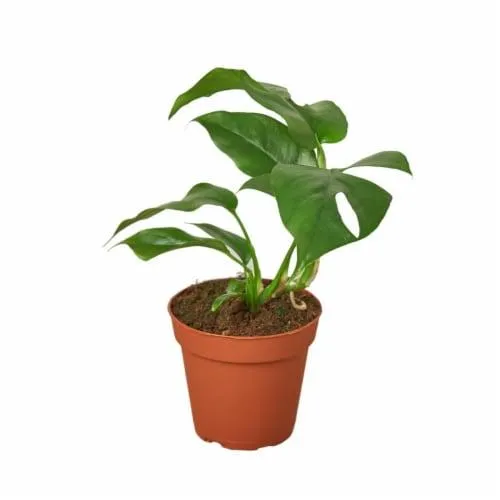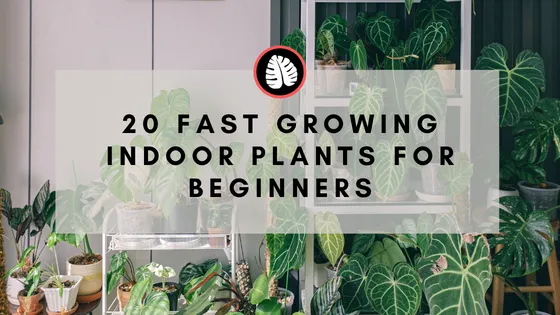The Top 5 Fastest Growing Philodendron Plants
Philodendrons are popular houseplants known for their lush foliage and low maintenance needs. Within the philodendron family, some varieties grow much faster than others. If you’re looking for quick results, the following 5 philodendron types should be at the top of your list.
1. Philodendron selloum (Split-leaf philodendron)
- Native to tropical West Africa
- Leaves can reach over 2 feet long on mature plants
- Grows very rapidly in warm, humid conditions
The split-leaf philodendron, also called the tree philodendron, is legendary for its fast growth rate. I purchased a young selloum plant last year and it’s already trailing down from its hanging basket. The slender, deeply lobed leaves give it a truly dramatic appearance. From my experience, selloum thrives with consistently moist soil and partial sun. It may grow too quickly for some gardeners! You’ll need to stake the vines or allow it to trail extensively.
2. Philodendron hederaceum (Heartleaf philodendron)
- Common houseplant sold in 4-6 inch pots
- Leaves resemble a heart shape
- Can grow several new leaves per month in optimal conditions
The heartleaf philodendron, also called heartleaf ivy or baby rubber plant, has earned a reputation as a fast starter. I’ve witnessed heartleaf put out an amazing amount of new growth within just a few weeks of being repotted in the springtime. Unlike some other philodendrons, it can tolerate low to medium light very well. The dark green, glossy heart-shaped leaves retain their coloring even without direct sun. Water when the soil becomes slightly dry.
3. Philodendron bipinnatifidum (Laceleaf philodendron)
- Leaves are wispy and lacelike with numerous lobes
- Native to tropical jungles in Central and South America
- Grows quickly when its roots become established
In my experience, the bipinnatifidum or laceleaf philodendron can rival selloum’s speed once it gets going. New leaves emerge folded up like an accordion and unfurl to reveal an intricate lace-like pattern. It prefers partial to bright indirect light. The stems are delicate when young but become woody with age. Give it a nutrient-rich potting mix and keep the soil consistently moist in warmer months. Minor diseases or pests seem to bounce right off this vigorous grower.

4. Philodendron micans (Velvet-leaf philodendron)
- Small roundish leaves feel silky-soft to the touch
- Can tolerate a wide range of light conditions
- Produces long drooping vines as it climbs and trails
Basically, the velvet-leaf or sweetheart vine philodendron is a crazy fast grower. I’ve seen micans put out 20+ new tiny leaves every month during the active growing season. It thrives on neglect and seems impervious to common philodendron pests. You’ll need to stake the vines or let it trail from hanging baskets and shelves. In lower light, the leaves stay small and round—but provide ample sun and it will produce longer greener foliage.
5. Philodendron scandens (Silver philodendron)
- Leaves mature to a silver-gray color on trailing or climbing varieties
- Tolerates low light very well making it ideal for offices
- Vigorous vines can grow several inches per week
The silver philodendron may not win a beauty contest with its bland grayish green leaves. However, its incredible growth rate more than makes up for an unexciting appearance. In my experience, a potted scandens will develop noticeable new growth within 10 to 14 days during spring and summer. It trails gracefully from hanging baskets but can also climb supports and rough surfaces using aerial roots. Sort of like the basic “weed” of houseplants, the silver philodendron flourishes with minimum care.
So in summary, if you want fast results, go for a selloum, heartleaf, laceleaf, velvet-leaf, or silver philodendron. They are some of the most vigorous philodendron selections around. Just be prepared to do some occasional shaping, pruning, or repotting as their active growth may outpace your expectations. Controlled conditions like warmer temperatures, high humidity, and consistent moisture will stimulate even faster growth. While these fast growers deliver quick gratification, many collectors appreciate the slower developing types too. Different philodendrons suit different tastes—and different gardening patience levels!
Fastest Growing Philodendron Varieties
| Variety | Growth Rate | Size | Care Level |
|---|---|---|---|
| Philodendron micans | Fast | Up to 6 ft | Easy |
| Philodendron hederaceum | Very Fast | Up to 20 ft | Easy |
| Philodendron gloryosum | Fast | Up to 10 ft | Moderate |
| Philodendron bipinnatifidum | Very Fast | Up to 15 ft | Moderate |
| Philodendron scandens | Fast | Up to 30 ft | Easy |
FAQ
-
What are some of the fastest growing philodendrons?
Some of the quickest philodendrons are:

- Philodendron selloum – this vine type philodendron can grow nearly a foot per year, making it pretty speedy.
- Philodendron hederaceum – also called ‘English ivy’, P. hederaceum spreads rapidly by aerial roots and can cover a large area in not too much time.
- Philodendron mexicanum – with big heart shaped leaves, P. mexicanum puts on size pretty fast, sometimes doubling in height and width annually.
-
How long does it take philodendrons to mature?
Most philodendrons will need at least a couple years to become a good sized plant. However, their rate of growth depends on different factors like the type of philodendron, soil conditions, light, water and food. Under optimum care, some faster growing kinds might reach adulthood basically within a year. But generally speaking, philodendrons are not super speedy mateurers. It takes them a bit longer to get all grown up compared to certain other houseplants.
-
Why do philodendrons grow so slowly sometimes?
Philodendrons can slow way down if their needs are not met. The main things that hinder their growth are:
- Insufficient light – many philodendrons really need at least partial sun to thrive and produce good mass.
- Too little water – underwatering will absolutely stunt their progress.
- Poor drainage – soggy soil conditions are no good for philodendron roots.
- Lack of nutrients – without fertilizer in the soil, growth may drag majorly.
Give your philodendron what it craves, and it’ll start moving a lot quicker.
-
Are all philodendrons climbers or vines?
While numerous philodendrons can climb nicely, not every type is equally inclined to do so. Some kinds stay rather contained as bushy foliage plants. For instance, philodendron hederaceum will definitely climb like crazy up a moss pole with its aerial roots. However, a philodendron bipinnatifidum may prefer to creep along the ground in more of a spreading style, not too ambitious to scale. So in summary, most but not all philodendrons have at least some climbing ability. It depends hugely on the precise species or cultivar.

-
How long do philodendrons live?
When cared for properly, philodendrons are extremely long-lived houseplants. Some varieties are documented to have survived for over 50 years! Of course, their lifespan hugely relies on giving them happy conditions. But basically, philodendrons can really stand the test of time if you treat them right with TLC. They may just become immortal friends that stick with you for many, many years to come. That’s sort of amazing when you think about it!
-
Can philodendrons be grown from cuttings?
Yes indeed, propagating philodendrons from cuttings is a breeze. Simply remove a stem tip with 2-3 leaves and place the cutting in a glass of water. Within a couple weeks, you’ll see beautiful new roots emerging. Once they have a good sturdy system of roots, transplant the propagule into potting soil. In no time, your cutting will sprout new growth as a full fledged young plant. It’s a fun and easy way to grow free additional philodendrons from your existing collection.
-
Is it difficult to care for philodendrons as houseplants?
In general, philodendrons are considered low maintenance and fairly simple to keep indoors. They tolerate a wide range of conditions and fairly average watering. However, there are always exceptions, so do your research before buying a specific type of philodendron. Is it picky about light or humidity? Does it need extra food? Once you’re aware of any unique needs, philodendrons are a breeze to look after – one of the hardiest kinds of houseplants around. Just give it what it wants, and you’ll be rewarded with piles of handsome foliage, sometimes for many decades!
-
How do I properly care for a fast growing philodendron to keep it looking nice?
To care for a rapidly expanding philodendron and prevent it from becoming a tangled mess, here are some good practices:

- Provide a sturdy moss pole or support for climbing types to latch onto.
- Regularly staking or tying wayward stems keeps the plant tidy.
- Prune off any damaged or dying foliage to optimize new growth.
- Repot into a slightly larger container when roots start to fill the pot.
- Feed weekly during warm seasons when growth is turbocharged.
- Rotate the plant occasionally so it grows symmetrically.
With a little training and support, even the speediest philodendrons can look lush and well-behaved.
